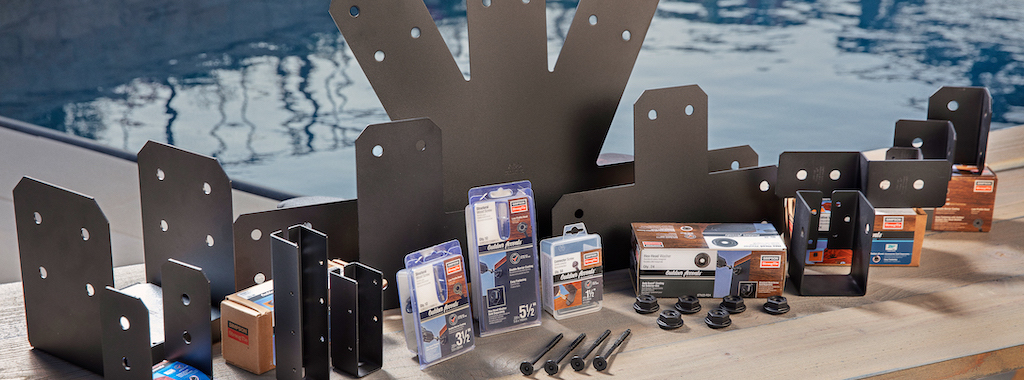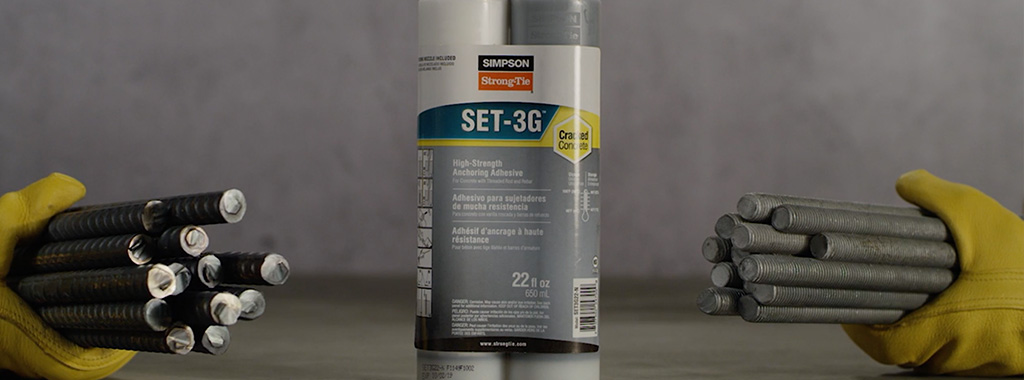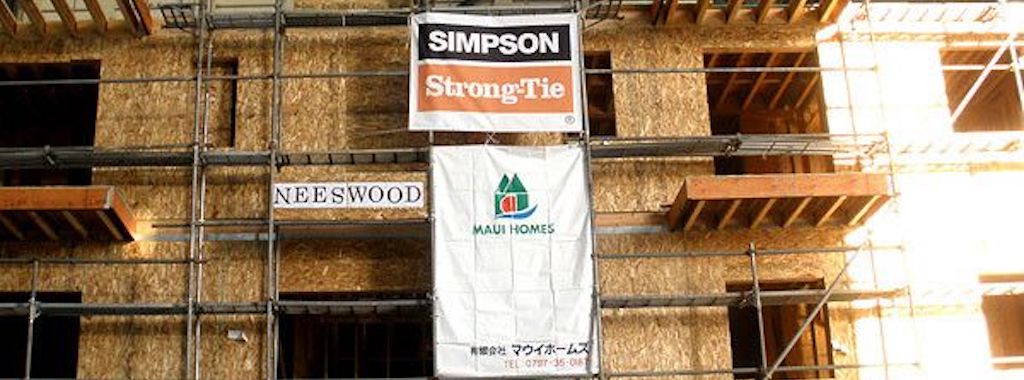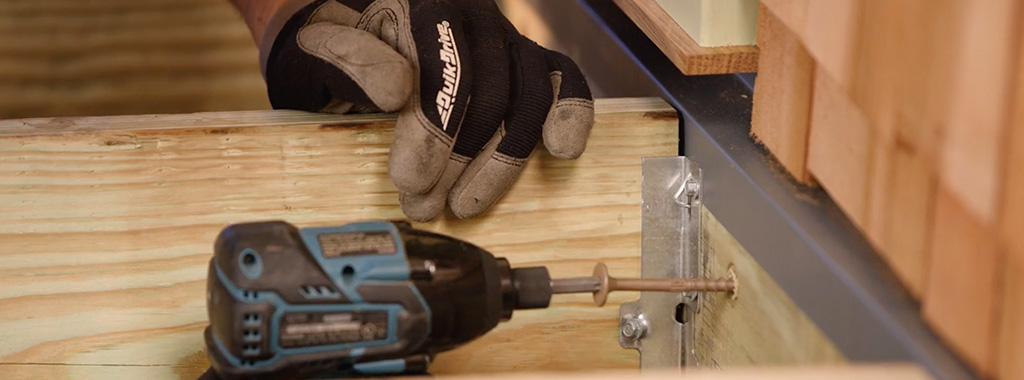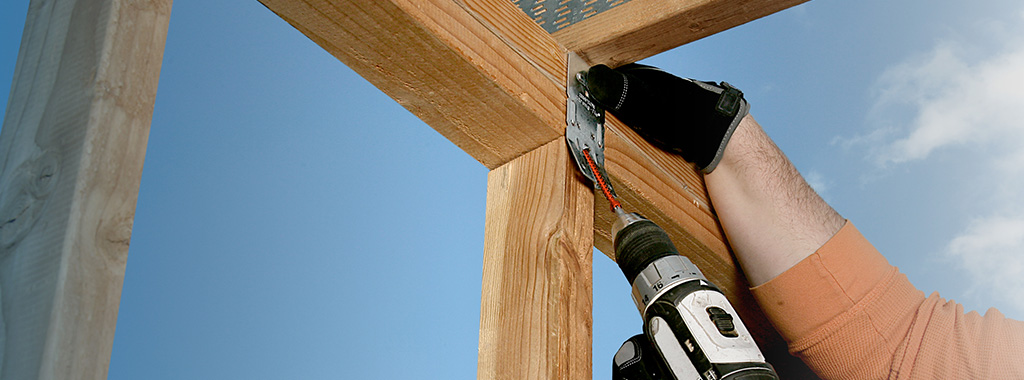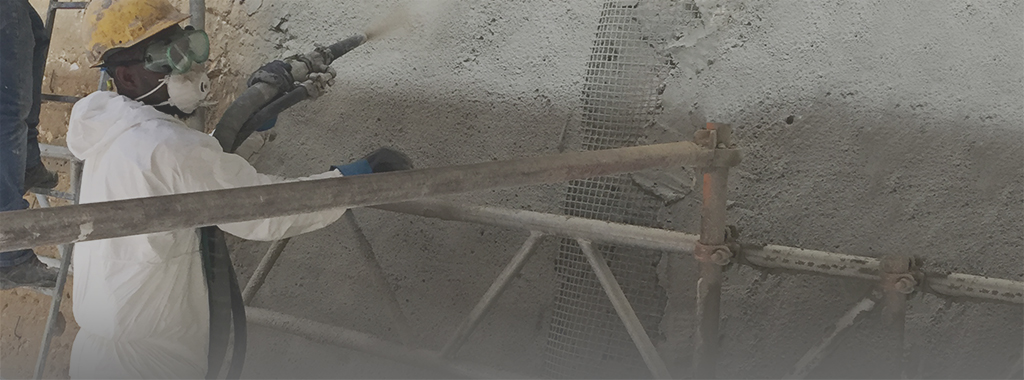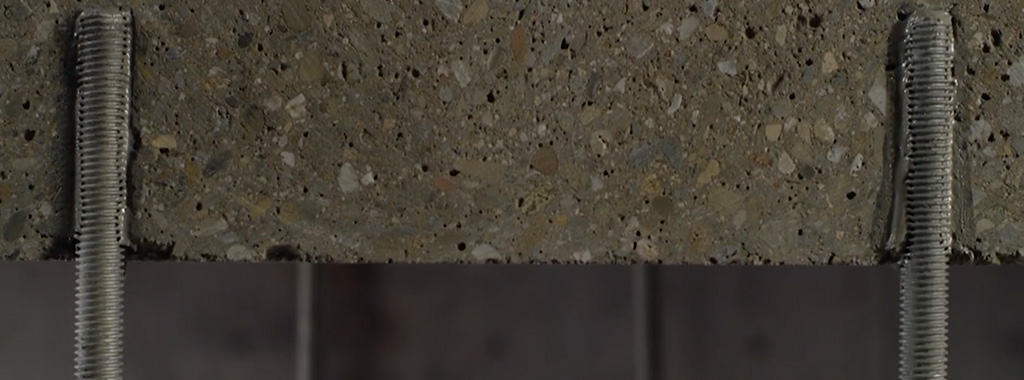Like everyone else in the world, I’ve been spending more time at home these past few months. More than I ever have before. During this time, I’ve found myself thinking about all the home improvement projects that would make our outdoor space more enjoyable. It’s something that in the extreme busyness of our “normal” life, I didn’t have a lot of time for. But being home 24/7 with two energetic and loud little boys has meant a lot of outside time. As a California native, I am grateful to be able to enjoy beautiful outdoor weather most of the year. I love being outside with my family, hanging out in the backyard, escaping all the tempting electronic devices that are constantly pulling us in. And now, more than ever, while sheltering –in place during the COVID-19 pandemic, I’m so thankful for a backyard that we can enjoy. So, topping my backyard home improvement project list: adding a shade structure, like a pergola or pavilion.
Category: Testing/R&D
Simpson Strong-Tie is constantly testing and innovating.
Applying ACI 318-14 Development Length Provisions to Post-Installed Reinforcing Bars Secured to Concrete with Construction Adhesive
The evaluation report, ESR-4057, was recently updated to allow the design of SET-3G adhesive for post-installed reinforcing bars using the ACI 318 development length provision. This blog has been reposted replacing SET-XP with SET-3G using the original design examples. The SET-XP evaluation report, ESR-2508, currently limits f’c to 2,500 psi for seismic applications located in seismic design category C–F. SET-3G does not carry the same limitation allowing for a considerable reduction in development length at higher values of f’c. In general, a substantially lower installation cost can be expected using SET-3G for seismic applications. Additionally, SET-3G has slightly reduced edge and spacing requirements. Engineers can access a free online calculation tool to easily determine the rebar development or lap splice length for either adhesive product.
I first learned about the application of the ACI 318 development length provision to post-installed reinforcing bars back in 2003 when I read Post-Installed Adhesive-Bonded Splices in Bridge Decks, authored by Ronald A. Cook and Scott D. Beesheim. In their series of experiments, holes were drilled adjacent to cast-in-place bars using a carbide-tipped drill bit, and new bars were secured in these holes using an anchoring adhesive presumed to be of a type commonly used in concrete construction.
Continue Reading
Good Ideas Come from Many Places — “Necessity Is the Mother of Invention”
You never know where the next great product idea or innovation is going to come from — some of our best new ideas originate with the customers who use our current products. At Simpson Strong-Tie, we welcome any inspiration that can help us serve our customers’ needs even better. With so much competition, however, and because so much research and testing are entailed in developing each new product, the criteria that an idea must meet to gain eventual acceptance are necessarily quite rigorous. In this post, Steve Rotzin, Manager of Intellectual Property and Legal Services at Simpson Strong-Tie, outlines some of these criteria for your consideration.
All of us, at one time or another, dream up a product idea of some sort. My wife was once sanding the tongue-and-groove boards of our living room ceiling and she thought of a very cool idea of gloves that had Velcro on them and users could interchange sandpaper of various grit on any finger of the glove. If you’ve ever sanded anything, this actually made a lot of sense especially for complex shapes and tough to reach spots. I researched it and found out that someone had already thought of it and “patented it.”
Continue Reading
Designing Resilience: NEESWood Capstone a Decade Later
In 2009, Simpson Strong-Tie participated in an unprecedented research event to highlight the importance of earthquake-resistant wood construction.
The event, the world’s largest earthquake test, was a collaborative Network for Earthquake Engineering Simulation project. It teamed academics, engineers, and industry researchers from around the world to subject a structure to what engineers refer to as the “maximum considered event” (MCE), a large, rare earthquake projected to occur, on average, approximately every 2500 years.
Continue Reading
SDWS Timber Screw – The Evolution Continues
Simpson Strong-Tie® R&D engineers are always looking to make products even better and more cost effective, in ways that will improve life not only for homeowners, but also for Designers and builders. In the following post, Aram Khachadourian explains how the newly designed SawTooth™ point on our code-listed Strong-Drive® SDWS Timber screw makes driving faster and easier with no predrilling. The flat head also makes connector and sheathing placement a lot smoother.
Continue Reading
Epoxy vs. Acrylic Adhesive Systems: Which Is Right for Me?
Not all anchoring adhesives are created equal. There are important differences between acrylic-based and epoxy-based adhesive systems — differences that affect installation, gel and cure times, and anchoring performance. In the following post, Marlou Rodriguez, S.E., of Simpson Strong-Tie, lays out some of the comparative installation advantages of each system.
There are two common types of adhesives for anchoring threaded rod or rebar into concrete — epoxy-based systems and acrylic-based systems. What’s the difference? When should you specify one rather than the other? This blog post will help you understand the differences and guide you in choosing the best adhesive for your anchoring solution.
Continue Reading
Drive a New Path: Resisting Uplift with Structural Fasteners
Structural screws are designed and tested to do hard work, but that doesn’t make them hard to use. In this post, Simpson Strong-Tie structural engineer Bryan Wert explains how the load-rated strength, versatility and easy installation of the code-listed Strong-Drive® SDWC Truss screw and SDWF Floor-to-Floor screw make it a cinch to create a continuous load path to resist wind uplift.
Winter’s finally shedding her blanket and unveiling springtime in Texas. There’s now a short window of picture-perfect weather where my purchases at Home Depot are no longer foam hose bib covers to protect outdoor faucets from freezing temperature, but aren’t quite yet tiki torches and floats for the pool for hot and humid summer days. I find myself in the garden center looking at the freshly delivered trees, shrubs and flowers, along with just about every other adult in my city. This year, my wife’s decided we need to surround our outdoor living space with hanging planters displaying perky red, purple, yellow and blue flowers.
Continue Reading
Q&A About Fabric-Reinforced Cementitious Matrix
On February 14, we hosted the third interactive webinar in the Simpson Strong-Tie Composite Strengthening Systems™ Best Practices Series: “Introducing Fabric-Reinforced Cementitious Matrix (FRCM).”
Simpson Strong-Tie engineering manager Brad Erickson, S.E., P.E., and Simpson Strong-Tie senior product manager Mark Kennedy, PMP, conducted an informative discussion of this new product solution. You can view the webinar in our Training Center and take a course to earn one hour of CEUs, PDHs and AIA LU/HSW credits. The course and webinar discuss installation steps, identify projects where FRCM would be ideal, and cite testing and industry standards associated with FRCM.
Continue Reading
Q&A About MPBZ Moment Post Base
This week’s post was written by Jhalak Vasavada, Research & Development Engineer at Simpson Strong-Tie.
Continue Reading
Simpson Strong-Tie® SET-3G™ Adhesive Offers a Ductile Solution for Post-Installed Anchorage near a Concrete Edge
Designing post-installed anchorage near a concrete edge is challenging, especially since the ACI provisions for cracked-concrete anchorage went into effect. In the following post, one of our field engineers, Jason Oakley, P.E., explains how SET-3G™ and Anchor Designer™ software from Simpson Strong-Tie make it easier to design a ductile anchor solution.
Engineers often provide holdown anchoring solutions near a concrete edge to help prevent overturning of light-frame shear walls during a seismic (or high-wind) event. Sometimes a post-installed anchor must be used if the cast-in-place anchor was mislocated or misinstalled, or is located where a retrofit or addition is needed. Since the cracked-concrete anchorage design provisions went into effect more than a decade ago, it has been challenging for engineers to offer a near-edge post-installed anchoring solution. This is especially true for structures subject to earthquake loads in seismic design category (SDC) C through F. Simpson Strong-Tie’s new SET-3G epoxy is the first anchoring adhesive in the industry to offer exceptionally high bond-strength values that permit ductile anchorage in concrete near an edge. This blog post will cover a specific example that focuses on Chapter 17 of ACI 318-14 to design a threaded rod, anchored with SET-3G adhesive, used to secure a holdown located 1 3/4″ away from a single concrete edge (Figure 1).
Continue Reading



